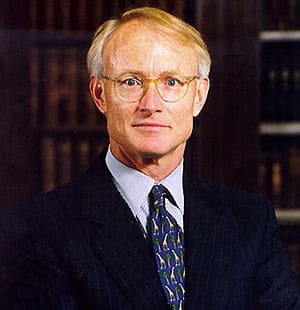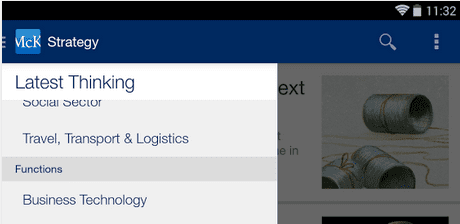Conversation with Matt McDonald: Forming Your Business Strategy
 We’ve been really looking forward to sharing this conversation we had recently with Matt McDonald. Matt has worked for McKinsey in New York and was Associate Director of Communication at the White House. Now he’s working for Hamilton Place Strategies, a public policy consultancy based in Washington DC.
We’ve been really looking forward to sharing this conversation we had recently with Matt McDonald. Matt has worked for McKinsey in New York and was Associate Director of Communication at the White House. Now he’s working for Hamilton Place Strategies, a public policy consultancy based in Washington DC.
This is the first part of the conversation we had with Matt recently in which we discussed just what it is that makes or breaks business strategy. We hope you enjoy it.
Perhaps to start things off you could tell us a little bit about yourself, your history and your experience.
Matt McDonald: I’ve worked in both communications and the business world in different forms over the years. I started my career as a speech writer for the Governor of the State of Massachusetts. I kind of stumbled into this out of college because it sounded like a really cool opportunity. After that, I came down to DC and I was the director of Rapid Response on President Bush’s 2004 re-election campaign. I worked in the White House after that. I’ve worked for Governor Schwarzenegger and helped set up his re-election campaign in California.
And then I went back to business school in MIT and was at McKinsey for a number of years in their New York and Washington offices, before leaving to team up with some old colleagues and try to bridge those worlds of policy and communication.
OK let’s start with the management consultancy side of things what would you say your experience has taught you about how to form good business strategy?
Matt McDonald: Strategy is interesting. I think that strategy is probably one of the least understood aspects of the political world. Generally speaking –and this isn’t exclusive to politics– people seem to have a hard time understanding what strategy is and what strategy isn’t. I think a lot of people conflate strategy with tactics.
I think at a high level strategy is choice. Strategy is doing one thing and not doing another. It’s like the classical definition of economics where you have to allocate scarce resources. I think about strategy in a similar way where the resources are time and energy as well as people and money. The choice of strategy is where to put those resources.
The thing that I’ve found from business school and consulting in particular is that there is a discipline to strategy. There are tools that you can use to think through how you develop a strategy. There is an element of it that can be common sense but there are also a lot of tools you can use to augment your logical thinking about a problem or situation.
And what are some of the ways you like to structure your thinking?
Matt McDonald: I’m trained in the McKinsey way of approaching these things. The discipline there is when you approach a problem you approach it with a MECE structure to your issue. MECE stands for Mutually Exclusive Collectively Exhaustive. The classical example of that I think is helpful for a lot of people is when you ask them ‘how do you get from New York to Boston?’. What MECE allows you to do is to break a problem into its constituent parts in a clean way. And by pushing yourself to think in a MECE way rather than doing a shortcut towards what you think the solution might be you force yourself to uncover potential options which you might not otherwise have considered because you were using a mental heuristic to get you to a quick answer.
In many contexts a quick answer is very helpful but when you’re thinking through a knotty problem or a particular strategy you don’t want to use those shortcuts.
Can you talk a little bit about what you think makes bad strategy? What are some classic mistakes? What are some things to avoid?
Matt McDonald: I think that there two levels to this. The most common bad strategy is no strategy at all. And so that’s the first thing I’d say people want to look to avoid. If you have weak strategy it’s still better than not having a strategy. Because the temptation that exists when you are a manager or you’re starting a business and you’re faced with a strategic decision about where to allocate your resourceis to say ‘yes’ to everything. The easiest answer is ‘yes’.
If you’re running a business you can get into a zone where the easiest answer is yes, where you chase all the apparent business opportunities that appear even though they may or may not be in you wheelhouse. The worst strategy is one where you fail to discern what is worth time and effort and what is not.
And it’s tempting because because people infrequently get criticized for doing everything. That’s a very safe zone for a manager to end up in. As a manager you’re job is literally to decide what is important and what is not.
On the flip-side, I think a lot of bad strategy comes as a function of not being close enough to your market or not recognizing the situation on the ground. Think about the classic example of Blockbuster versus Netflix and the way that Christensen’s Innovator’s Dilemma that played out there. That’s a classic example of not being able to look around the corner and understand the way the world is actually working.
I think it’s interesting right now when you see places like HBO making their content available for an individual subscription. I think it will be very interesting to see whether people learn the lesson of Netflix and apply it where their product delivery mechanism is being disrupted by new technologies.
Now while at McKinsey, you helped companies to think about how to operate in an environment of rapid change. What did you learn about strategy formation in times of disruption?
Matt McDonald: It was a very interesting period because I was at McKinsey from the Fall of 08 after the big crash through to early 2011. In a normal situation you rely on modeling and forcasting to tell you what the incremental future looks like. And that helps you to plan and shape your business decision making over time.
In times of uncertainty, those tools lose some of their utility. And in these times you start to rely more on scenario planning and then a sort of ‘what would you believe about the future’ type exercise. So the focus of the strategy development tools shifts. You really want to do some scenario planning which outlines maybe four different versions of what could happen going forward. Maybe there’s an upside surprise. Maybe there’s a downside surprise. Maybe there’s something else. But going through the discipline of thinking about what each of those scenarios entails for your strategy is a very helpful exercise to test your strategy.
A good strategy will entail some sort of option preservation going forward. So in times of uncertainty the value of optionality becomes very high.
One tool that I use all the time and I really like is as you are evaluating a strategy asking the question ‘what would I have to believe in order for this strategy to be a good strategy?’. And that’s a pretty simple question, but it’s really about articulating in a clear way your assumptions. I’ve always thought about modeling not so much as predicting the future but a process of testing your thinking and your assumptions.
Oftentimes if you’re putting together a strategy and you ask the question ‘what conditions would have to be in place for this strategy to be a good one?’, articulating that can be a very good test of whether your strategy is a good one or not.
And conversely I guess you can test against your own confirmation bias by asking ‘what would need to be true before I would have to change my mind about this strategy?’, because it’s always very easy to jump to your heuristic as you were describing earlier and then look for the evidence afterwards.
Matt McDonald: Yes, and I generally find that if you ask the question as you’re going through the process, just the exercise of stating your assumptions means you have to really carefully consider whether they make sense or not.
We hope you enjoyed this first part of our conversation with Matt McDonald. Why not join the conversation and let us know your thoughts through Twitter






Leave a Reply
Want to join the discussion?Feel free to contribute!